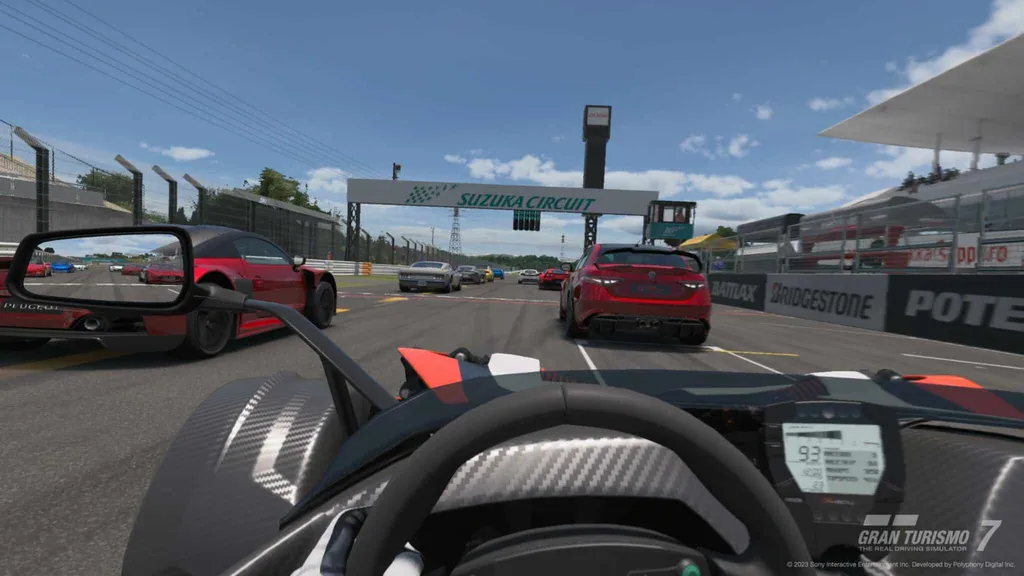Gran Turismo 7, Sony’s flagship racing series, arrives as a PS VR2 launch title. Available as a free update for existing PS5 owners, here’s our full review.
Gran Turismo Sport promised greater things to come on PSVR. With VR support limited to 1v1 races against an AI opponent and time trials, it amazed and frustrated many in 2017, and Gran Turismo 7 shows us how it’s done on PlayStation VR2. Polyphony Digital claims this latest entry was always designed for VR, and you can play everything in your headset – split-screen multiplayer aside. Outside of the driver’s seat, most of Gran Turismo 7 remains flatscreen.
Polyphony Digital is clearly passionate about motorsport and the wider car industry, and Gran Turismo 7’s campaign goes beyond a few races strung together. Progression occurs through the GT Café where the menu is more of a shopping list. You’re tasked with collecting cars based around a specific theme which are earned through good performances in races. Some challenges require you to hold a National License obtained by completing set challenges.
Platforms: PS VR2
Release Date: Out Now
Developer: Polyphony Digital
Price: $69.99
Completing menus gives you a brief history lesson and the café owner details the legacy these cars left behind. This adds some appreciated context, making this more than a pretty vehicle sim. Your selection is initially restricted to basic used cars before more expensive dealers become available. There are currently 460+ cars available and more are likely to come through regular updates, too. Every car is also upgradeable from road vehicles to racers for better speed, handling, cornering and more.
You’re not getting a Ferrari or Bugatti straight away, though the campaign has clearly defined progression through these menus that works toward fancier options. Campaign races usually require a top-three finish to clear them before moving on; winning isn’t always necessary. Some races mandate specific vehicle types, like Japanese vehicles only, encouraging you to try other cars. There’s also a VR showroom for viewing your collection, and though it’s a fun novelty to pad out PS VR2 support, that wears off almost immediately.
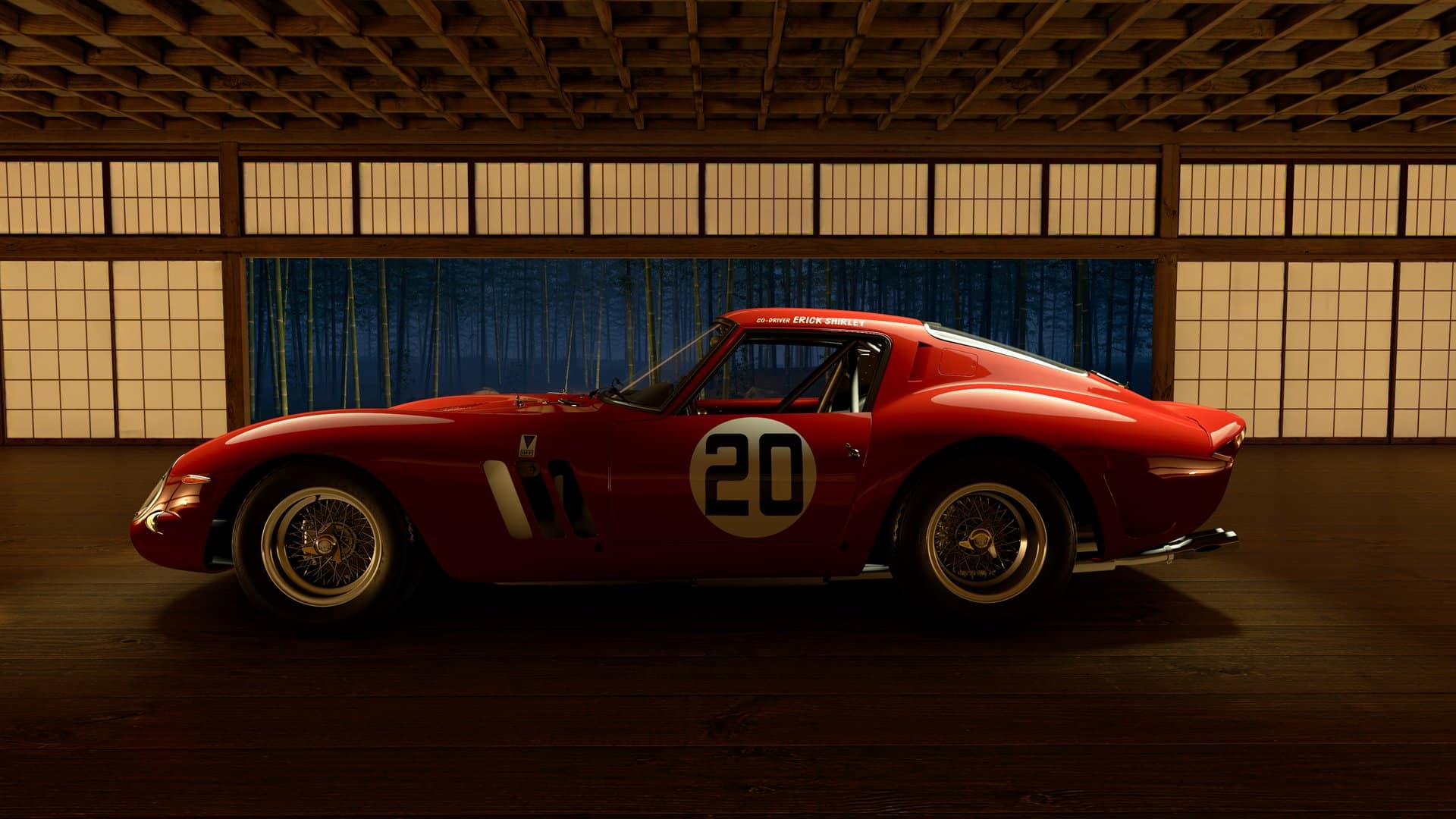
Naturally, racing is where VR gameplay truly shines, which usually begins with a rolling start before placing you in the driver’s seat. I was immediately impressed by Gran Turismo 7’s attention to detail with its working speedometer and realistic interiors, and you can minimize the heads-up display (HUD) elements like driver names for greater realism. Watching the raindrops fall across the windscreen and seeing the sun accurately reflect in the mirrors all complemented this.
Your avatar responds to your headset position and if you lean out too far, everything turns into a wireframe outline, so no sticking your head out the window. I wished for more interactivity here, though I’d say the same for most VR racers. It feels incredible being out on track in VR and I found myself driving more cautiously. AI cars won’t hesitate to shut the door on you so you’ve got to carefully time precisely when to overtake. Executing some tricky passes and seeing that checkered flag as you enter 1st place feels incredibly rewarding.
What’s here is highly polished but not always consistent. It’s one thing that replays can’t be viewed through VR, but pitting mid-race oddly goes back to flatscreen view temporarily. Admittedly, not many campaign races would ever need you to pit since they usually last 2 or 3 laps, but swapping between these views during a race doesn’t feel right.
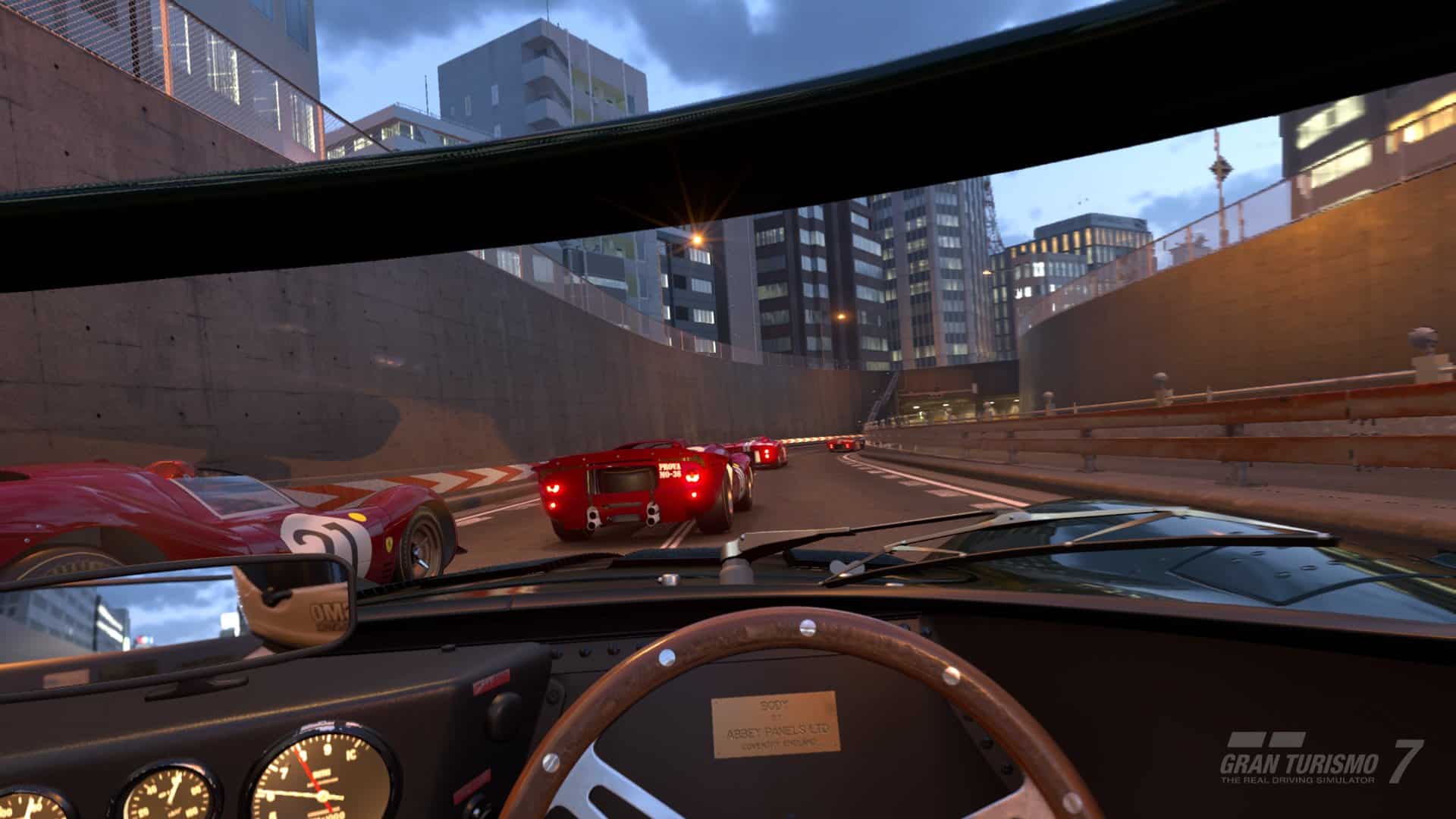
That aside, Gran Turismo 7 packs some enjoyably varied circuits, and as a Formula 1 fan, I was pleased to see Suzuka, Nurburgring and the Red Bull Ring. Combined with off-road tracks and wet weather options, I’m thrilled at what’s here. If you’re struggling in races, there are three difficulty settings you can switch between, alongside on-track assists like racing lines and auto braking options.
There’s also a multiplayer mode gated behind campaign progression, but it doesn’t take long to unlock. As mentioned, split-screen multiplayer isn’t available on PS VR2, which is understandable. You can take this casually through standard races, host lobbies with friends, or do ranked matches at the Sport Pavilion.
Presently, Gran Turismo 7 doesn’t support the PS VR2 Sense controllers. Granted, VR racing sims often rely on more traditional gamepads, though more minor things like pointing at where I’d like to go on the world map would be nice. This leaves you with two options: a standard PS5 DualSense or a choice of steering wheels. Using DualSense has merits like haptic feedback which lets you feel changes in the road surface, while adaptive triggers add resistance when braking.
I preferred the steering wheel, and for this review, I received a Thrustmaster T248 from the manufacturer. You don’t get that same buzz from the DualSense haptics, but controls feel tighter and more realistic with its force feedback, and putting my feet to the pedals and handling the wheel directly adds considerable immersion. The T248 requires three wires: a power supply, a connector to the pedals, and a USB cable to plug into the PS5. Overall, it’s a great steering wheel for racing fans. The T248 and alternative wheels aren’t usually cheap, but they can absolutely be a fantastic way to enjoy the Gran Turismo 7 VR racing experience.
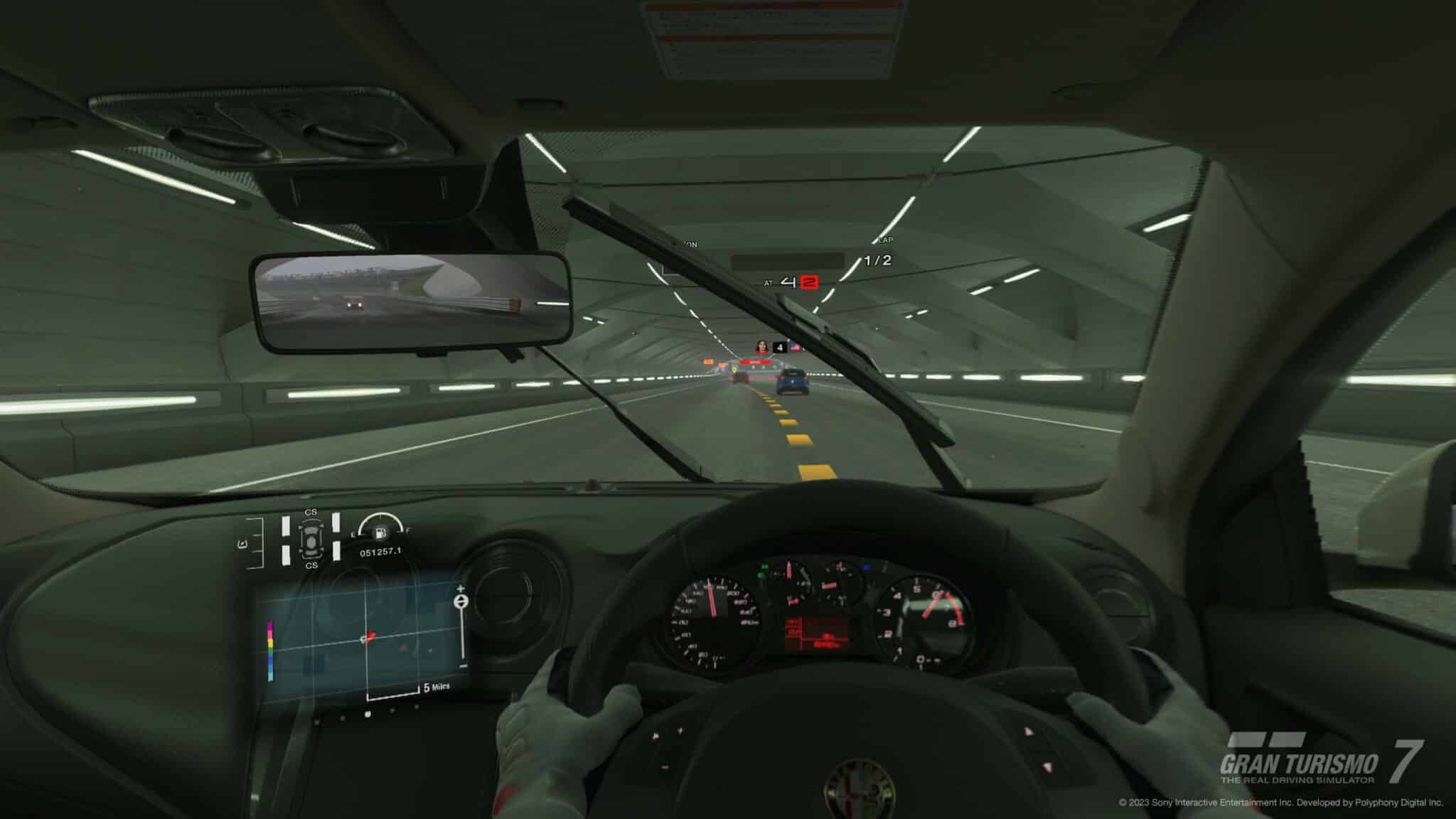
Gran Turismo 7 is bare on PS VR2 comfort options. Outside the VR Showroom you don’t explore beyond the driver’s seat in VR. Headset vibration during collisions and impacts can be turned off, while force feedback on steering wheels and DualSense trigger strength is adjustable. The controller’s vibration strength can be changed too. Haptic feedback can be entirely switched off from the PS5 settings menu.
GT7 reprojects its 60 frames-per-second gameplay to 120Hz, something previously confirmed by Polyphony’s CEO. I didn’t notice any issues relating to ghosting but it’s possibly apparent or uncomfortable to some. For more details on reprojection, check out our PS VR2 tech analysis.
Gran Turismo 7 is a solid racing game made better in VR. Unfortunately, GT7’s problems from the original PS5 release haven’t disappeared because it now uses a headset. Most egregious is the always-online requirement, meaning you can’t play the solo campaign mode without a connection. Polyphony claims this requirement prevents cheating. Only 13 cars and a limited arcade mode with ten tracks are available when playing offline. That isn’t terrible for a quick fix, but with 30+ tracks total, most of the game becomes unplayable if there’s an internet outage.
Earning credits to buy new vehicles doesn’t feel too grindy, but some cars are priced so high it incentivizes players into microtransactions. Want that McLaren F1 ‘94? You better find 20 million credits, with $20 buying 2 million credits on PSN. That’s a more extreme example, but many vehicles aren’t cheap. Roulette tickets are awarded for free upon completing menus, offering five options that provide credits or cars, which lands on the lowest value choice almost every time.
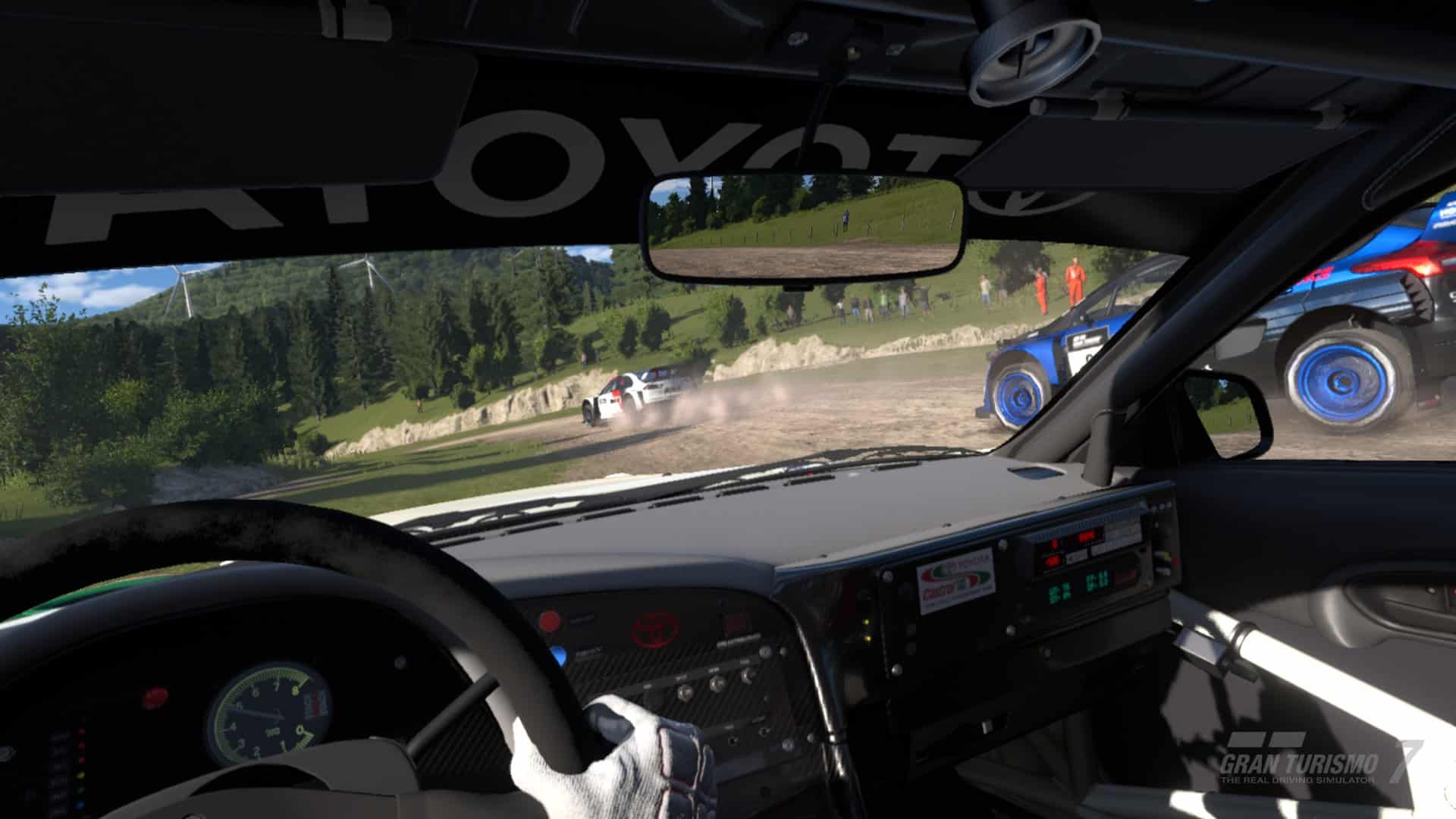
Gran Turismo 7 Review – Final Verdict
Gran Turismo 7 is one of the most potent racing sims ever to grace VR and Polyphony Digital’s passion for motorsport is in every moment. GT7 is a love letter that celebrates cars old and new, offering a significant range of playable vehicles and racing tracks that take full advantage of the new hardware. A few lingering problems from the original release dampen things slightly but make no mistake; Gran Turismo 7 with PS VR2 is a must for racing fans.

UploadVR focuses on a label system for reviews, rather than a numeric score. Our reviews fall into one of four categories: Essential, Recommended, Avoid and reviews that we leave unlabeled. You can read more about our review guidelines here.

